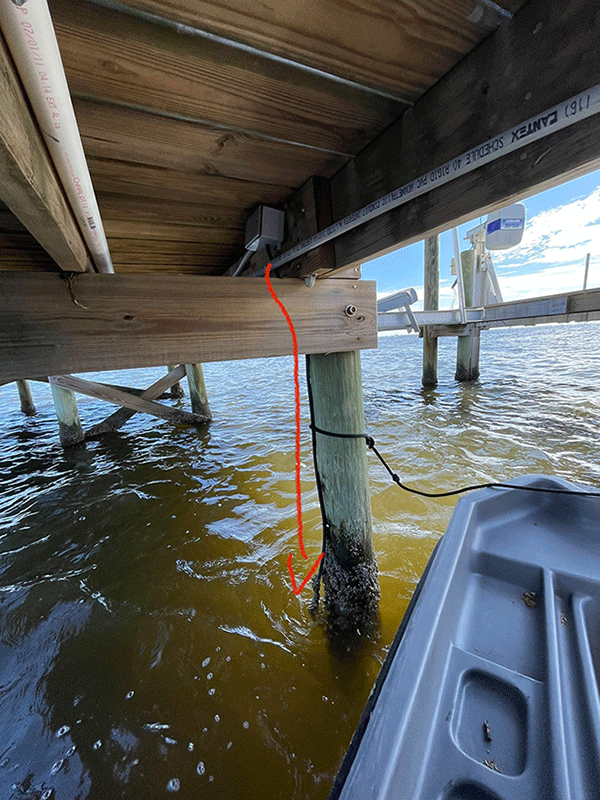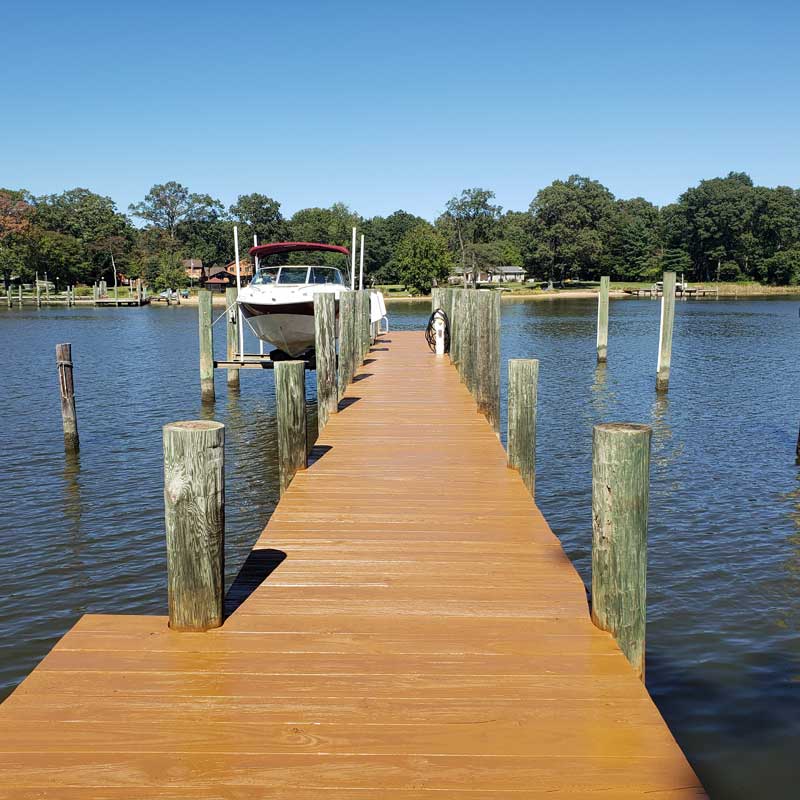How to Pick the Right Solution for Your Dock Repairs
How to Pick the Right Solution for Your Dock Repairs
Blog Article
Efficient Dock Repair Techniques: Guaranteeing Architectural Stability
Making certain the architectural integrity of docks via effective repair methods is critical for the long life and security of marine facilities. Ultimately, selecting the best repair work products, such as composite products and corrosion-resistant alloys, is vital for durability.
Examining Dock Damages
Analyzing dock damages is an important first action in ensuring the architectural integrity and safety and security of any docking center. Key elements to examine include the dock's structure, pilings, decking, and equipment (Dock Repairs).
Architectural engineers or qualified inspectors commonly execute these evaluations utilizing specialized tools and strategies. Underwater examinations could use finder devices or remotely ran lorries (ROVs) to discover immersed damage. Over water, visual evaluations are enhanced by utilizing wetness meters and various other analysis devices to discover underlying concerns not promptly noticeable to the naked eye.

Deciding On Repair Products
Selecting the ideal repair service materials is a crucial action in the dock repair procedure, one that directly influences the longevity and performance of the fixed framework. Material option have to be driven by variables such as environmental conditions, load-bearing demands, and compatibility with existing dock parts. As an example, timber is a typical selection for anchors due to its all-natural strength and aesthetic allure. Nevertheless, selecting the ideal type of timber, such as pressure-treated lumber or normally rot-resistant species like cedar or teak wood, is essential to withstand aquatic environments.
Along with wood, composite products are significantly prominent because of their sturdiness and low upkeep requirements. Composites, normally made from a mix of plastic and timber fibers, offer superb resistance to rot, pests, and UV damages. For steel anchors, picking corrosion-resistant alloys such as galvanized steel or marine-grade light weight aluminum is important to stop corrosion and make certain architectural stability in saline water conditions.
Epoxy resins and marine-grade sealers are indispensable for repairing fractures and sealing joints, offering a water resistant obstacle and improving the dock's general stamina. By thoroughly picking high-grade products, dock fixings can accomplish durable outcomes, thereby guarding versus future deterioration and making sure secure, reputable usage.
Architectural Reinforcement Strategies
Reliable structural support techniques are critical in making sure the stability and longevity of dock repair services. This technique is particularly efficient for anchors exposed to heavy lots or extreme ecological problems.
One more vital technique is the application of fiber-reinforced polymers (FRP) These products offer high strength-to-weight proportions and outstanding resistance to rust, making them optimal for enhancing concrete or wooden anchors. FRP can be used in sheets or strips and bonded with epoxy materials to enhance architectural stability.
Supporting and securing systems likewise play a critical role in architectural reinforcement. Cross-bracing, making use of metal or wood beams, can combat lateral pressures, minimizing guiding and activity. Anchoring systems, such as helical piers or driven stacks, give a steady foundation by moving loads to much deeper, more secure dirt layers.
Finally, the assimilation of load-distribution plates can aid disperse weight a lot more uniformly throughout the dock's surface area, mitigating local anxiety points. These methods collectively make sure that docks stay robust and secure, efficient in enduring the rigors of their operational environment.
Advanced Repair Approaches

Another sophisticated method entails underwater welding, which permits for fixings to be performed without the demand to dewater the location. This approach is particularly useful for addressing architectural concerns in immersed dock elements, making sure very little interruption to operations. Boosted welding techniques, coupled with robotic systems, supply accuracy and integrity, thereby expanding the life-span of the dock.
Furthermore, cathodic security systems are executed to avoid corrosion in metal dock frameworks. By utilizing sacrificial anodes or amazed current systems, these strategies successfully alleviate the electrochemical processes that lead to product degeneration.
Finally, advanced surveillance innovations, such as structural health surveillance (SHM) systems, supply real-time data on the problem of dock frameworks. These systems enable aggressive maintenance and timely treatments, eventually guaranteeing visit this page the long-term structural visit this site honesty of the dock.
Maintenance and Avoidance
Maintenance and avoidance are fundamental principles that underpin the longevity and safety and security of dock structures. Normal evaluations are paramount, enabling early discovery of wear and tear, prospective weaknesses, and ecological impacts. A positive approach, including regular checks for deterioration, rot, and structural changes, reduces pricey repair work and lengthens the dock's operational life.
Precautionary actions ought to consist of applying protective coverings to steel components to safeguard against corrosion and making use of cured wood to resist degeneration. In addition, guaranteeing correct drainage and ventilation can stop water buildup, which is a common source of architectural degradation. Integrating top quality materials and adhering to maker standards during building and repair service stages also play vital duties in enhancing toughness.

Educating workers in dock maintenance best techniques makes certain regular application of preventative actions. Leveraging technical developments, such as drones for evaluations and sensors for real-time monitoring, can better improve maintenance efforts. By prioritizing upkeep and avoidance, dock proprietors can guarantee structural integrity, functional safety and security, and economical administration over the dock's lifespan.
Verdict
In conclusion, preserving the architectural integrity of aquatic centers demands detailed dock repair service techniques. Advanced repair service techniques, coupled with routine upkeep methods, ensure the dock stays risk-free and operational under diverse ecological conditions.
Making certain the structural stability of anchors through efficient repair service methods is extremely important for the long life and safety of aquatic centers.Picking the ideal repair materials is an essential step in the dock reconstruction procedure, one that directly affects the longevity and efficiency of the fixed framework.Efficient structural reinforcement techniques are crucial in ensuring the security and durability of dock repairs. By focusing on maintenance and avoidance, dock owners can ensure structural honesty, operational safety, and cost-efficient management over the dock's lifespan.
In final thought, preserving the structural honesty of marine centers requires extensive dock fixing methods.
Report this page